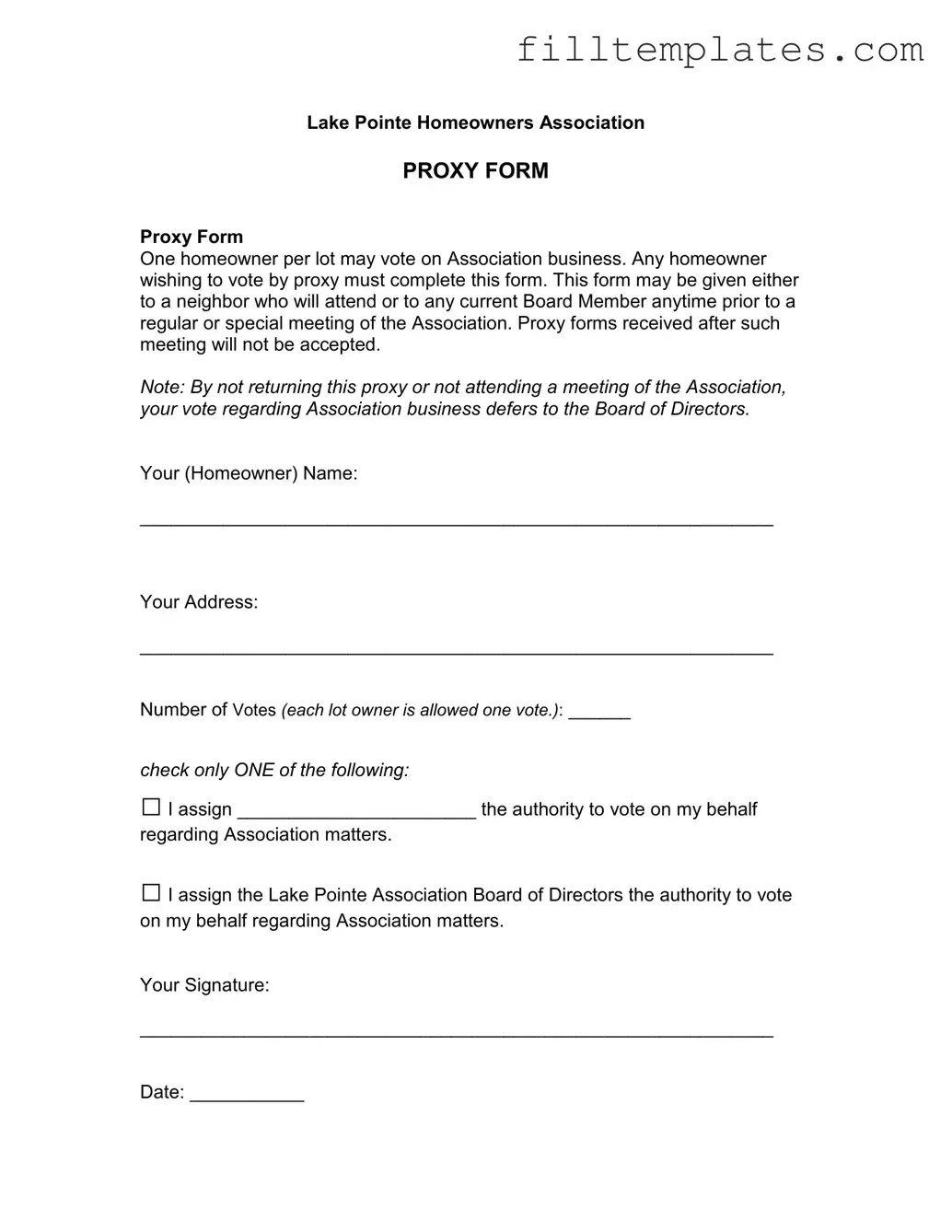Download Homeowners Association Proxy Template
The Homeowners Association Proxy form is a document that allows a homeowner to authorize another individual to vote on their behalf during association meetings. This form must be completed by any homeowner who cannot attend a regular or special meeting but still wishes to participate in association business. It can be given to a neighbor or a current board member prior to the meeting, ensuring that every voice is heard even in absence.
Open Homeowners Association Proxy Editor
